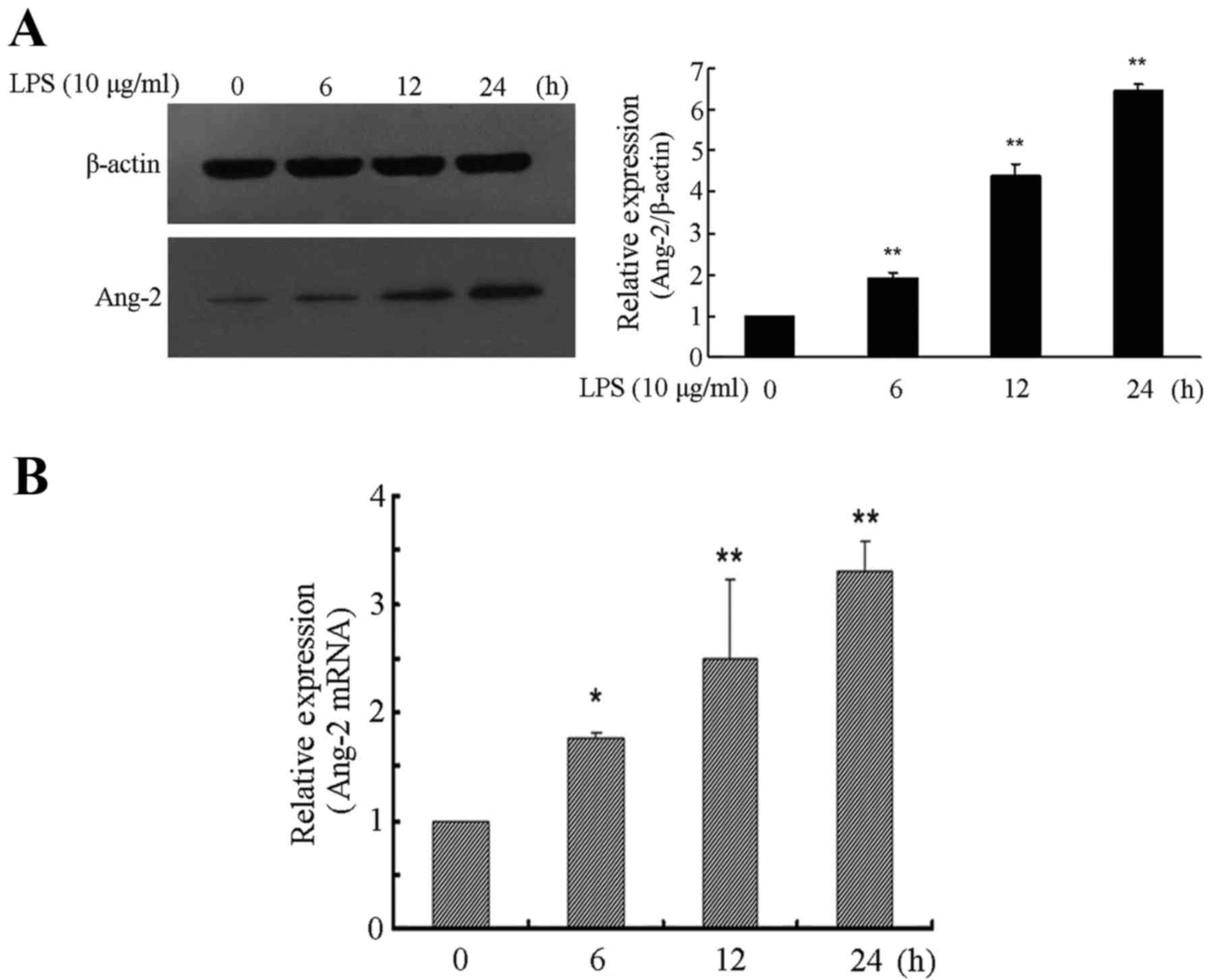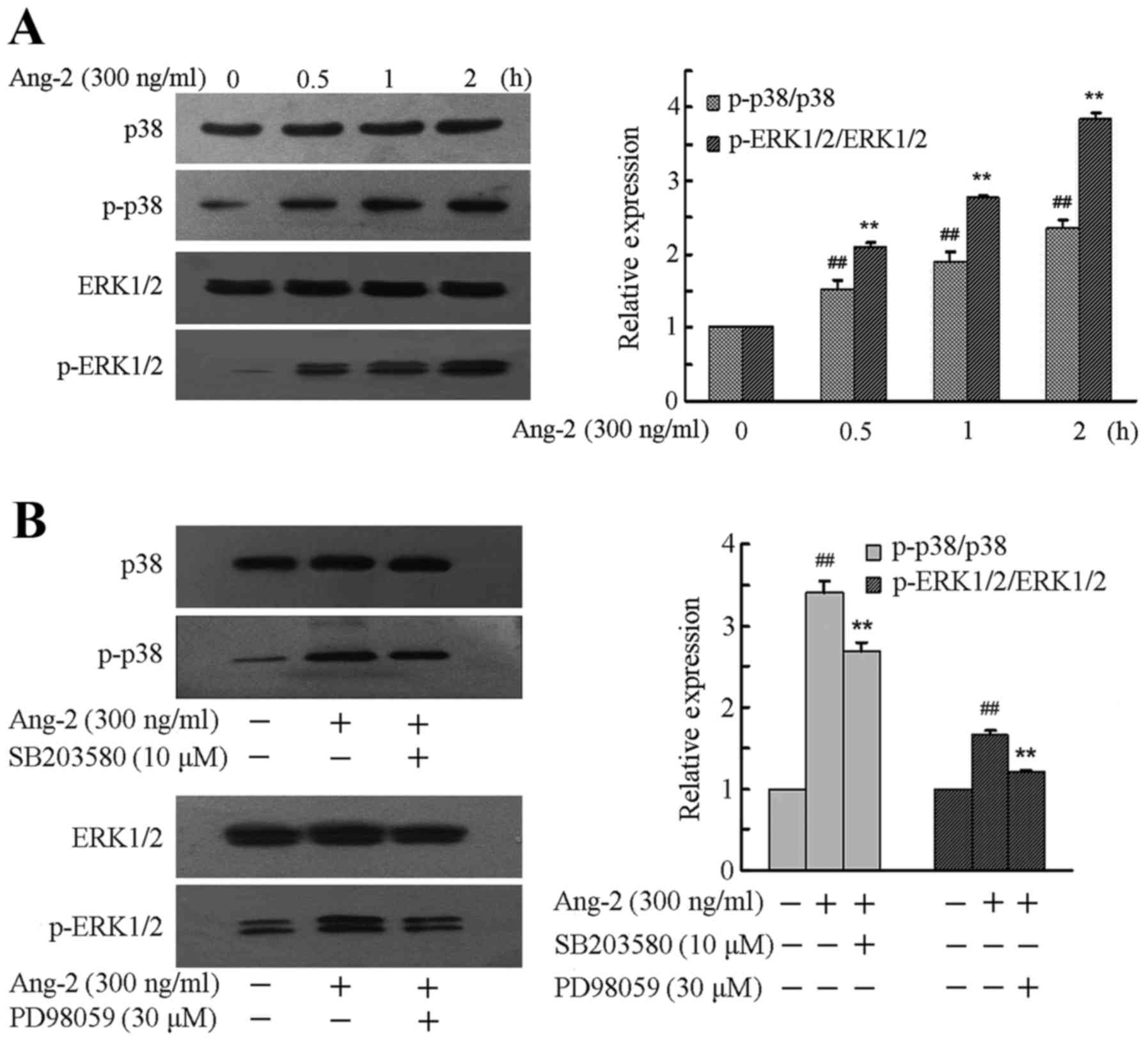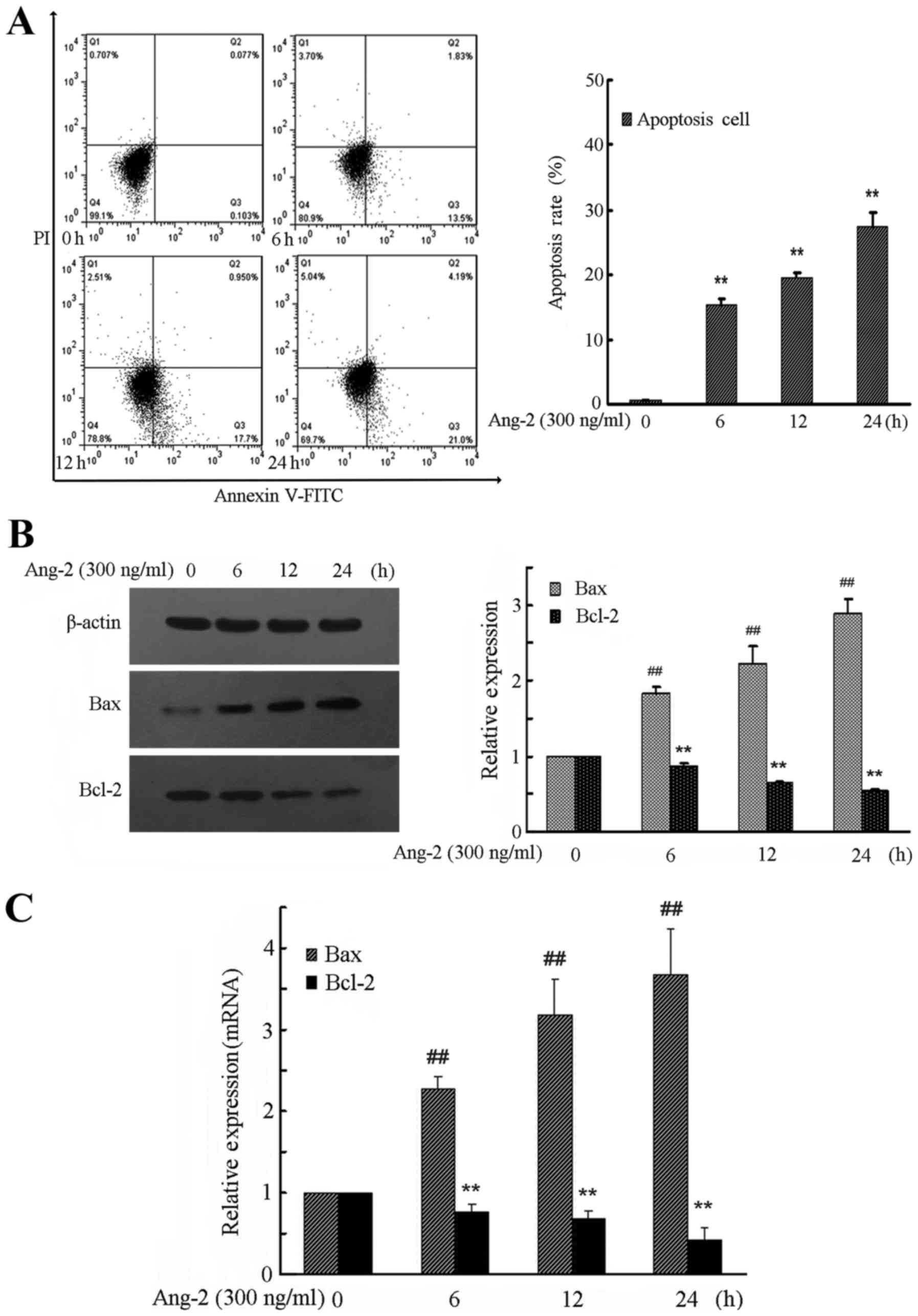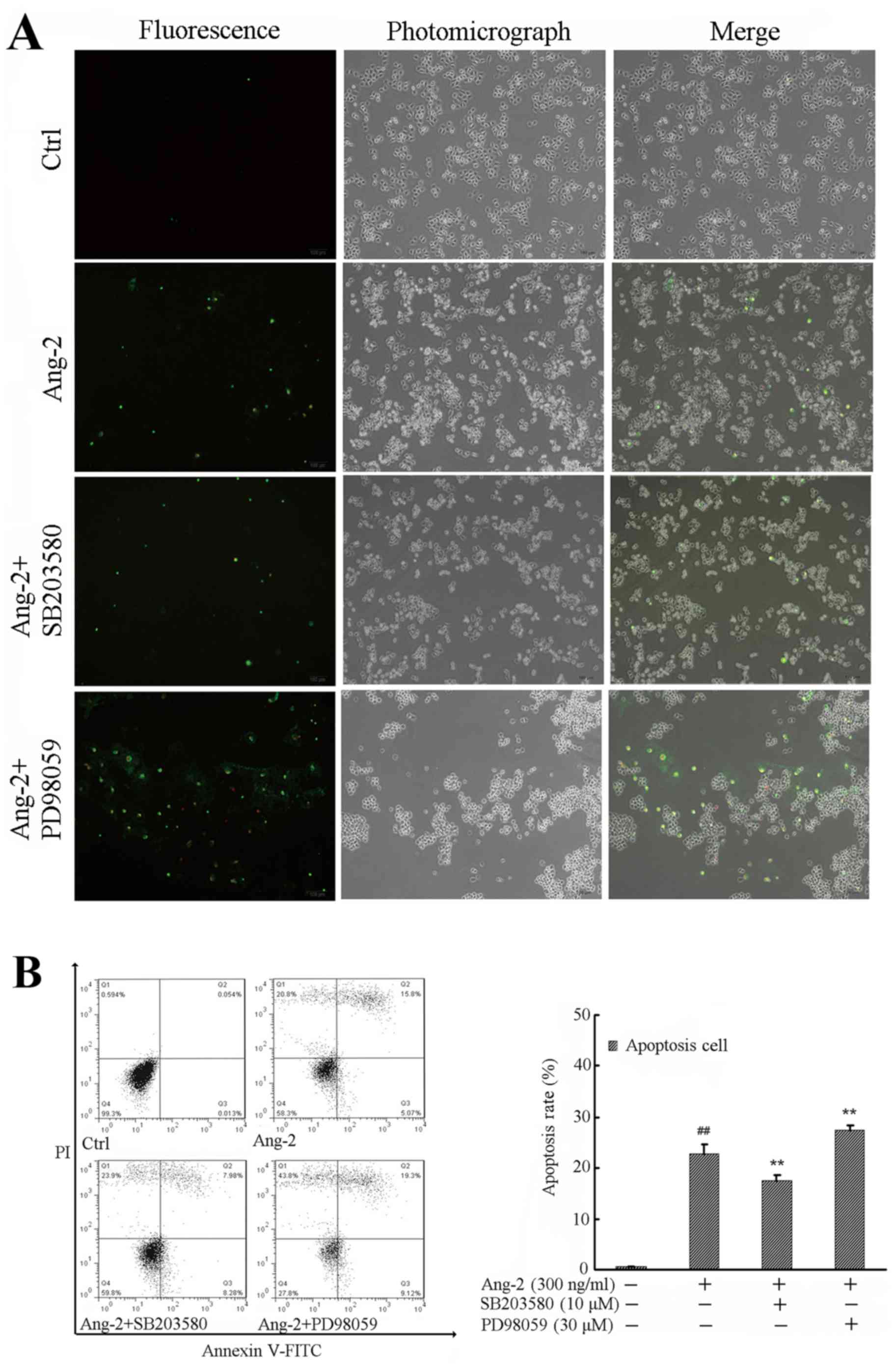|
1
|
Matthay MA, Ware LB and Zimmerman GA: The
acute respiratory distress syndrome. J Clin Invest. 122:2731–2740.
2012. View
Article : Google Scholar : PubMed/NCBI
|
|
2
|
Liu H, Liang X, Wang D, Zhang H, Liu L,
Chen H, Li Y, Duan Q and Xie K: Combination therapy with nitric
oxide and molecular hydrogen in a murine model of acute lung
injury. Shock. 43:504–511. 2015. View Article : Google Scholar : PubMed/NCBI
|
|
3
|
Chopra M, Reuben JS and Sharma AC: Acute
lung injury: Apoptosis and signaling mechanisms. Exp Biol Med
(Maywood). 234:361–371. 2009. View Article : Google Scholar : PubMed/NCBI
|
|
4
|
Lin WC, Chen CW, Huang YW, Chao L, Chao J,
Lin YS and Lin CF: Kallistatin protects against sepsis-related
acute lung injury via inhibiting inflammation and apoptosis. Sci
Rep. 5:124632015. View Article : Google Scholar : PubMed/NCBI
|
|
5
|
Li X, Shu R, Filippatos G and Uhal BD:
Apoptosis in lung injury and remodeling. J Appl Physiol (1985).
97:1535–1542. 2004. View Article : Google Scholar : PubMed/NCBI
|
|
6
|
Stefancec T: Endothelial apoptosis: Could
it have a role in the pathogenesis and treatment of disease. Chest.
117:841–854. 2000. View Article : Google Scholar : PubMed/NCBI
|
|
7
|
Matsuda N, Takano Y, Kageyama S,
Hatakeyama N, Shakunaga K, Kitajima I, Yamazaki M and Hattori Y:
Sliencing of caspase-8 and caspase-3 by RNA interference prevents
vascular endothelial cell injury in mice with endotoxic shock.
Cardiovasc Res. 76:132–140. 2007. View Article : Google Scholar : PubMed/NCBI
|
|
8
|
Huang H, Bhat A, Woodnutt G and Lappe R:
Targeting the ANGPT-TIE2 pathway in malignancy. Nat Rev Cancer.
10:575–589. 2010. View
Article : Google Scholar : PubMed/NCBI
|
|
9
|
Yuan HT, Khankin EV, Karumanchi SA and
Parikh SM: Angiopoietin 2 is a partial agonist/antagonist of Tie2
signaling in the endothelium. Mol Cell Biol. 29:2011–2022. 2009.
View Article : Google Scholar : PubMed/NCBI
|
|
10
|
Davis JS, Yeo TW, Piera KA, Woodberry T,
Celermajer DS, Stephens DP and Anstey NM: Angiopoietin-2 is
increased in sepsis and inversely associated with nitric
oxide-dependent microvascular reactivity. Crit Care. 14:R892010.
View Article : Google Scholar : PubMed/NCBI
|
|
11
|
Harfouche R and Hussain SN: Signaling and
regulation of endothelial cell survival by angiopoietin-2. Am J
Physiol Heart Circ Physiol. 291:H1635–H1645. 2006. View Article : Google Scholar : PubMed/NCBI
|
|
12
|
Kumpers P, van Meurs M, Molema G, Molema
G, Bijzet J, Lukasz A, Biertz F, Haller H and Zijlstra JG: Time
course of angiopoietin-2 release during experimental human
endotoxemia and sepsis. Critical Care. 13:R642009. View Article : Google Scholar : PubMed/NCBI
|
|
13
|
Harfouche R, Gratton JP, Yancopoulous GD,
Noseda M, Karsan A and Hussain SN: Angiopoietin-1 activates both
anti- and proapoptotic mitogen-activated protein kinases. FASEB J.
17:1523–1525. 2003. View Article : Google Scholar : PubMed/NCBI
|
|
14
|
Harfouche R, Hasséssian HM, Guo Y, Faivre
V, Srikant CB, Yancopoulos GD and Hussain SN: Mechanisms which
mediate the antiapoptotic effects of angiopoietin-1 on endothelial
cells. Microvasc Res. 64:135–147. 2002. View Article : Google Scholar : PubMed/NCBI
|
|
15
|
Livak KJ and Schmittgen TD: Analysis of
relative gene expression data using real-time quantitative PCR and
the 2(-Delta Delta C(T)) method. Methods. 25:402–408. 2001.
View Article : Google Scholar : PubMed/NCBI
|
|
16
|
Thurston G, Wang Q, Baffert F, Rudge J,
Papadopoulos N, Jean-Guillaume D, Wiegand S, Yancopoulos GD and
McDonald DM: Angiopoietin 1 causes vessel enlargement, without
angiogenic sprouting, during a critical developmental period.
Development. 132:3317–3326. 2005. View Article : Google Scholar : PubMed/NCBI
|
|
17
|
Gallagher DC, Parikh SM, Balonov K, Miller
A, Gautam S, Talmor D and Sukhatme VP: Circulating angiopoietin 2
correlates with mortality in a surgical population with acute lung
injury/adult respiratory distress syndrome. Shock. 29:656–661.
2008.PubMed/NCBI
|
|
18
|
Meyer NJ, Li M, Feng R, Bradfield J,
Gallop R, Bellamy S, Fuchs BD, Lanken PN, Albelda SM, Rushefski M,
et al: ANGPT2 genetic variant is associated with trauma-associated
acute lung injury and altered plasma angiopoietin-2 isoform ratio.
Am J Respir Crit Care Med. 183:1344–1353. 2011. View Article : Google Scholar : PubMed/NCBI
|
|
19
|
Agrawal A, Matthay MA, Kangelaris KN,
Stein J, Chu JC, Imp BM, Cortez A, Abbott J, Liu KD and Calfee CS:
Plasma angiopoietin-2 predicts the onset of acute lung injury in
critically Ill patients. Am J Respir Crit Care Med. 187:736–742.
2013. View Article : Google Scholar : PubMed/NCBI
|
|
20
|
Lee HJ, Cho CH, Hwang SJ, Choi HH, Kim KT,
Ahn SY, Kim JH, Oh JL, Lee GM and Koh GY: Biological
characterization of angiopoietin-3 and angiopoietin-4. FASEB J.
18:1200–1208. 2004. View Article : Google Scholar : PubMed/NCBI
|
|
21
|
Mizumura K, Gon Y, Kumasawa F, Onose A,
Maruoka S, Matsumoto K, Hayashi S, Kobayashi T and Hashimoto S:
Apoptosis signal-regulating kinase 1-mediated signaling pathway
regulates lipopolysaccharide-induced tissue factor expression in
pulmonary microvasculature. Int Immunopharmacol. 10:1062–1067.
2010. View Article : Google Scholar : PubMed/NCBI
|
|
22
|
Tan J, Liu D, Lv X, Wang L, Zhao C, Che Y,
Xie Q and Cui X: MAPK mediates inflammatory response and cell death
in rat pulmonary microvascular endothelial cells in an
ischemia-reperfusion model of lung transplantation. J Heart Lung
Transplant. 32:823–831. 2013. View Article : Google Scholar : PubMed/NCBI
|
|
23
|
Wang Z, Zhang J, Li B, Mao W and Chen S:
MAPK signaling mediates low shear stress-induced oxidative damage
in human umbilical vein endothelia cells in vitro. Nan Fang Yi Ke
Da Xue Xue Bao. 34:603–608. 2014.PubMed/NCBI
|
|
24
|
Rashed LA, Hashem RM and Soliman HM:
Oxytocin inhibits NADPH oxidase and P38 MAPK in cisplatin-induced
nephrotoxicity. Biomed Pharmacother. 65:474–480. 2011. View Article : Google Scholar : PubMed/NCBI
|
|
25
|
Chi G, Wei M, Xie X, Soromou LW, Liu F and
Zhao S: Suppression of MAPK and NF-κB pathways by limonene
contributes to attenuation of lipopolysaccharide-induced
inflammatory responses in acute lung injury. Inflammation.
36:501–511. 2013. View Article : Google Scholar : PubMed/NCBI
|
|
26
|
Zhang Z, Miao L, Lv C, Sun H, Wei S, Wang
B, Huang C and Jiao B: Wentilactone B induces G2/M phase arrest and
apoptosis via the Ras/Raf/MAPK signaling pathway in human hepatoma
SMMC-7721 cells. Cell Death Dis. 4:e6572013. View Article : Google Scholar : PubMed/NCBI
|
|
27
|
Min L, He B and Hui L: Mitogen-activated
protein kinases in hepatocellular carcinoma development. Semin
Cancer Biol. 21:10–20. 2011. View Article : Google Scholar : PubMed/NCBI
|
|
28
|
Ye Y, Hou R, Chen J, Mo L, Zhang J, Huang
Y and Mo Z: Formononetin-induced apoptosis of human prostate cancer
cells through ERK1/2 mitogen-activated protein kinase inactivation.
Horm Metab Res. 44:263–267. 2012. View Article : Google Scholar : PubMed/NCBI
|
|
29
|
Kim EK and Choi EJ: Pathological roles of
MAPK signaling pathways in human diseases. Biochim Biophys Acta.
1802:396–405. 2010. View Article : Google Scholar : PubMed/NCBI
|
|
30
|
Nwariaku FE, Rothenbach P, Liu Z, Zhu X,
Turnage RH and Terada LS: Rho inhibition decreases TNF-induced
endothelial MAPK activation and monolayer permeability. J Appl
Physiol (1985). 95:1889–1895. 2003. View Article : Google Scholar : PubMed/NCBI
|
|
31
|
Hoefen RJ and Berk BC: The role of MAP
kinases in endothelial activation. Vascul Pharmacol. 38:271–273.
2002. View Article : Google Scholar : PubMed/NCBI
|
|
32
|
Kanaji N, Sato T, Nelson A, Wang X, Li Y,
Kim M, Nakanishi M, Basma H, Michalski J, Farid M, et al:
Inflammatory cytokines regulate endothelial cell survival and
tissue repair functions via NF-κB signaling. J Inflamm Res.
4:127–138. 2011.PubMed/NCBI
|














